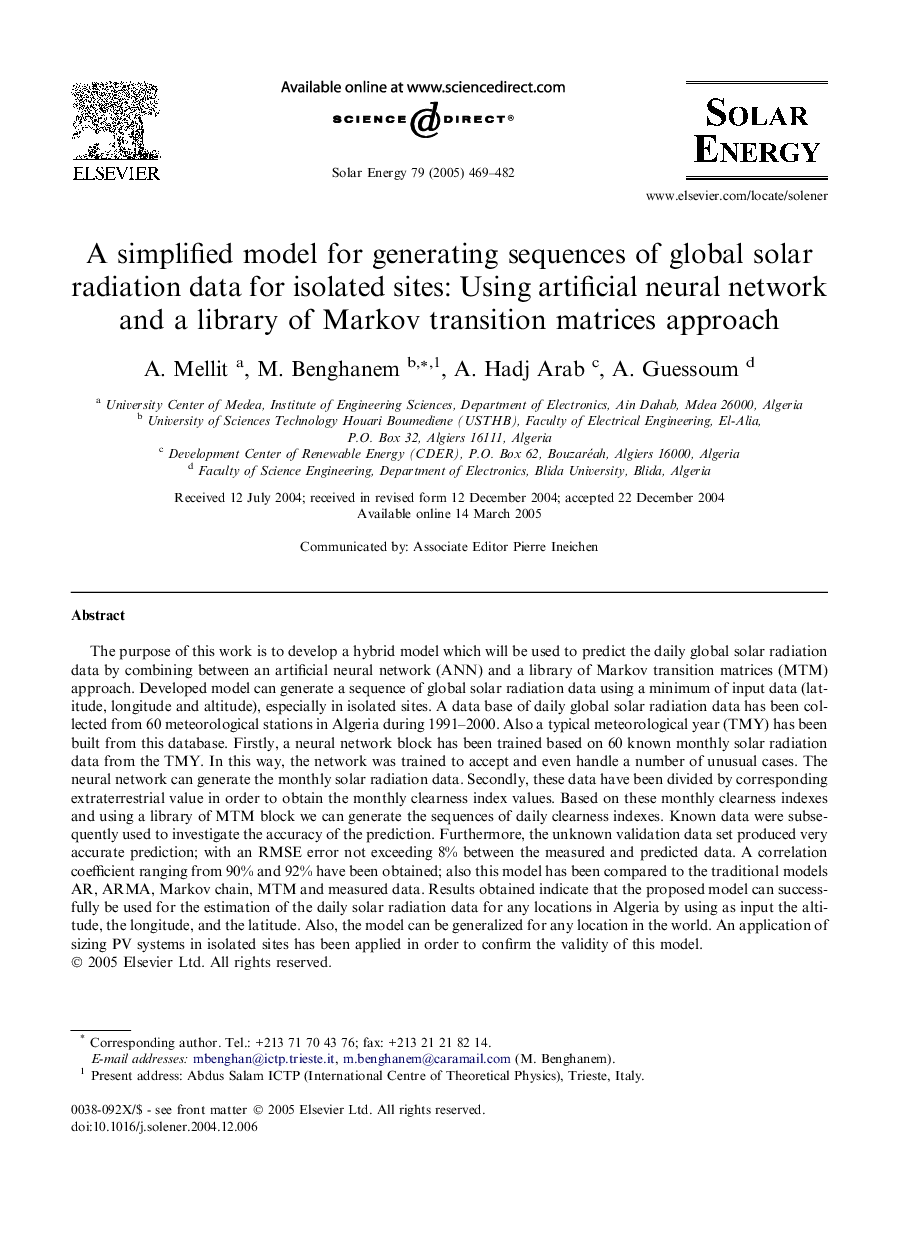| کد مقاله | کد نشریه | سال انتشار | مقاله انگلیسی | نسخه تمام متن |
|---|---|---|---|---|
| 10643137 | 998199 | 2005 | 14 صفحه PDF | دانلود رایگان |
عنوان انگلیسی مقاله ISI
A simplified model for generating sequences of global solar radiation data for isolated sites: Using artificial neural network and a library of Markov transition matrices approach
دانلود مقاله + سفارش ترجمه
دانلود مقاله ISI انگلیسی
رایگان برای ایرانیان
کلمات کلیدی
موضوعات مرتبط
مهندسی و علوم پایه
مهندسی انرژی
انرژی های تجدید پذیر، توسعه پایدار و محیط زیست
پیش نمایش صفحه اول مقاله

چکیده انگلیسی
The purpose of this work is to develop a hybrid model which will be used to predict the daily global solar radiation data by combining between an artificial neural network (ANN) and a library of Markov transition matrices (MTM) approach. Developed model can generate a sequence of global solar radiation data using a minimum of input data (latitude, longitude and altitude), especially in isolated sites. A data base of daily global solar radiation data has been collected from 60 meteorological stations in Algeria during 1991-2000. Also a typical meteorological year (TMY) has been built from this database. Firstly, a neural network block has been trained based on 60 known monthly solar radiation data from the TMY. In this way, the network was trained to accept and even handle a number of unusual cases. The neural network can generate the monthly solar radiation data. Secondly, these data have been divided by corresponding extraterrestrial value in order to obtain the monthly clearness index values. Based on these monthly clearness indexes and using a library of MTM block we can generate the sequences of daily clearness indexes. Known data were subsequently used to investigate the accuracy of the prediction. Furthermore, the unknown validation data set produced very accurate prediction; with an RMSE error not exceeding 8% between the measured and predicted data. A correlation coefficient ranging from 90% and 92% have been obtained; also this model has been compared to the traditional models AR, ARMA, Markov chain, MTM and measured data. Results obtained indicate that the proposed model can successfully be used for the estimation of the daily solar radiation data for any locations in Algeria by using as input the altitude, the longitude, and the latitude. Also, the model can be generalized for any location in the world. An application of sizing PV systems in isolated sites has been applied in order to confirm the validity of this model.
ناشر
Database: Elsevier - ScienceDirect (ساینس دایرکت)
Journal: Solar Energy - Volume 79, Issue 5, November 2005, Pages 469-482
Journal: Solar Energy - Volume 79, Issue 5, November 2005, Pages 469-482
نویسندگان
A. Mellit, M. Benghanem, A. Hadj Arab, A. Guessoum,